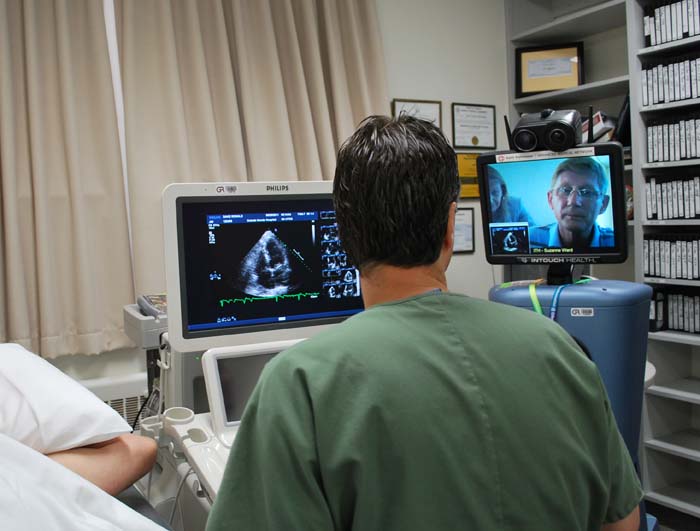Grande Ronde Hospital helping locals stay heart healthy
Published 3:55 pm Wednesday, February 12, 2020

- John Walmsley of Grande Ronde Hospital, La Grande, streams an echocardiogram to a doctor in Russia in June 2011, one of the first experiences with telemedicine in Oregon.
LA GRANDE — One of the leading causes of death is heart disease, according to the Center for Disease Control. It doesn’t matter what a person’s gender is, and often race or ethnicity does not play a major role in the risk, heart health remains a top priority in most hospitals and doctors offices. At Grande Ronde Hospital in La Grande, a mixture of technology and good technicians have kept the echocardiology department at the top of the game.
“Being able to do an echocardiogram is so critical to diagnosis,” said John Walmsley, the hospital’s lead echo sonographer. “With echocardiograms, by the time the patient sees a cardiologist, they know exactly what is going on.”
An echocardiogram is an ultrasound test of the heart, revealing the organ’s structure and function. According to the Society of Diagnostic Medical Sonography and the American Society of Echocardiography, Oregon, North Dakota, New Mexico and New Hampshire are the only states with legislation requiring the licensure of sonographers.
Working Hard
From May 2018 until this past January,, Walmsley was the only echo sonographer at Grande Ronde. That’s when Matthew Zink joined and help lighten the load. The hospital does approximately 120 echocardiograms each month.
“Echo sonographers are in very high demand and very wanted,” said Deedee Tanner, cardiopulmonary manager at the hospital.
The echocardiology department works with almost every other department to help with treatment including the emergency room, hospitalist, respiratory therapy and pediatrics.
“Our work helps guide treatment, from what medicines may need to be prescribed, to determining if surgery is necessary,” Walmsley said.
Walmsley explained that today’s testing is not the same as what it was even 20 years ago. Grande Ronde got its first echocardiogram in 1992, and since then the department has focused on building a personal connection with each patient that receives a test. Walmsley said this one-on-one contact with patients builds trust and helps bring in people who might otherwise not be willing to go through the tests.
“We had to push to get to where we are today,” he said.
Leading the way
One of the most exciting moments for the department came in June 2011 where the hospital was able to live stream an echocardiogram to a doctor in Russia. This technology made the hospital one of the leaders in the state for using telemedicine in cardiology.
“We wanted to see if we can transmit an echo from La Grande to Moscow,” Walmsley said. “Using Department of Defense technology we were able to do it. We became integral in the Oregon Board of Medicine changing things regarding telemedicine.”
There are several types of echocardiograms. Transesophageal echocardiography produces pictures of the heart by going through the throat. A transthoracic echocardiography uses a transducer over your chest to gather the images. Additional variations can include stress testing, which looks at the heart after exercise. There is very little risk when getting an echocardiogram. However, the stigma of heart problems and concern over the cost of these tests can keep people from coming in for testing.
Walmsley said having this access to the level of imaging Grande Ronde does is what will be most helpful in the fight against congestive heart failure.




